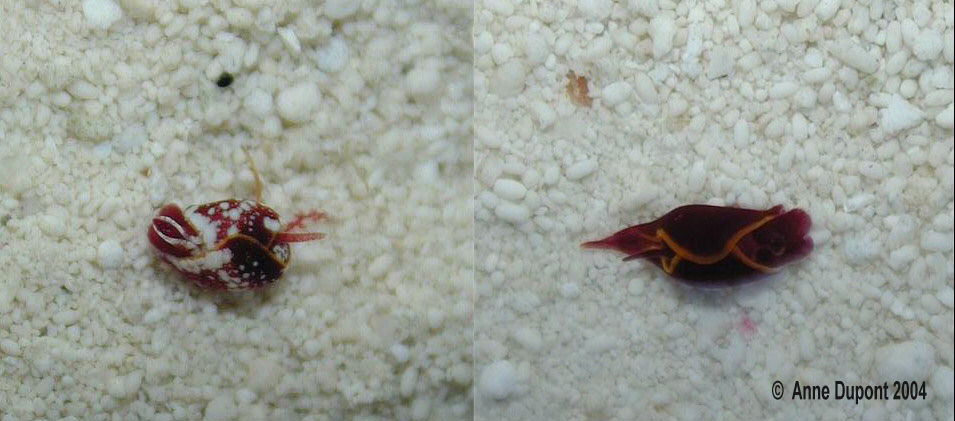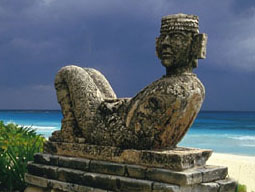 |
Gastropteron chacmol
Photos courtesy of Anne DuPont
Location: Stocking Island, Exumas, Bahamas (Southern Bahamas)
Depth: 3-6 feet - on sand during the day
Size: Approximately 4mm
January -March, 2004
Gastropteron chacmol Gosliner, 1989
Species of the genus Gastropteron are fascinating little creatures, with the athletic ability to burrow in sediments and swim, both. Previous BOW's have included members of sister genera - Sagaminopteron ornatum and Sagaminopteron nigropunctatum as well as, Siphopteron brunneomarginatum
Anne recently came across Gastropteron chacmol while diving Stocking Island, Exumas, in the Southern Bahamas. Anne reported that the species was quite common (literally found in the 100's) on sandy bottoms there. Like other Gastropterid species, specimens are quite small, measuring to about 7 mm in length.
Photo courtesy of Dave Behrens

|
Prior to Terry's description this species, specimens from the Caribbean had been referred to in the literature as
G. rubrum , a Mediterranean, east Atlantic species. Those reports had it occurring from Texas, Florida, and West Indies to Brazil. In his description of the species, Gosliner adds the Yucatan Peninsula, Mexico and Caracas Is., Venezuela, to this geographic range.
References:
Gosliner, T.M. (1989): Revision of the Gastropteridae (Opisthobranchia: Cephalaspidea) with descriptions of a new genus and six new species. The Veliger, 32(4): 333-381.
Danville, Calif
Apr. 2004

Anne and her husband reside in Delray Beach, Florida. When not diving Florida waters, they spend their time diving and cruising the Bahamas on their trawler.
You can drop Anne a note at akdupont@bellsouth.net |
Taxonomic information courtesy of:

David W. Behrens
Author:
Pacific Coast Nudibranchs
Send Dave mail at dave@seachallengers.com
|
